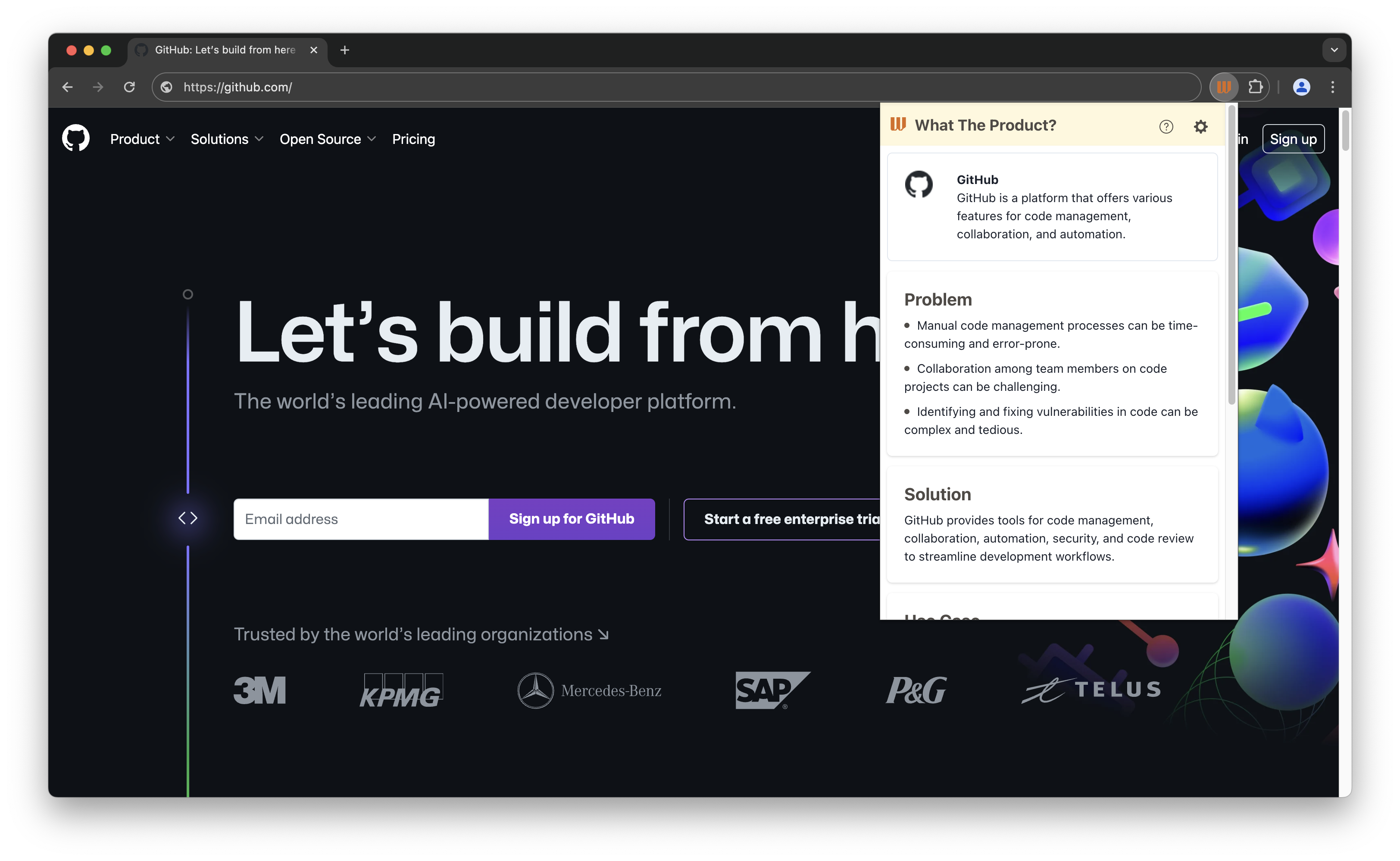One Click, Understand Any Product
Discover the power of "What The Product," the ultimate Chrome extension for product research. With just one click, this tool provides instant product insights, helping you simplify product research effortlessly. Whether you're a product manager, investor, startup founder, or market researcher, "What The Product" offers a comprehensive analysis of websites. It’s the perfect tool for summarizing and analyzing websites, saving you time and boosting your productivity.

Powered by OpenAI ChatGPT
Designed to evaluate new products and websites quickly and accurately, our Chrome extension for product analysis leverages the power of OpenAI ChatGPT. Get detailed reports on any product or website, including summaries, problems, solutions, target customers, competitors, and use cases. Make informed decisions faster with "What The Product," your go-to solution for efficient and effective product research.
Download What the Product today and transform the way you evaluate new products and websites!
What Our Users Say
Hear from our satisfied users about how What The Product? has transformed their product discovery process.

